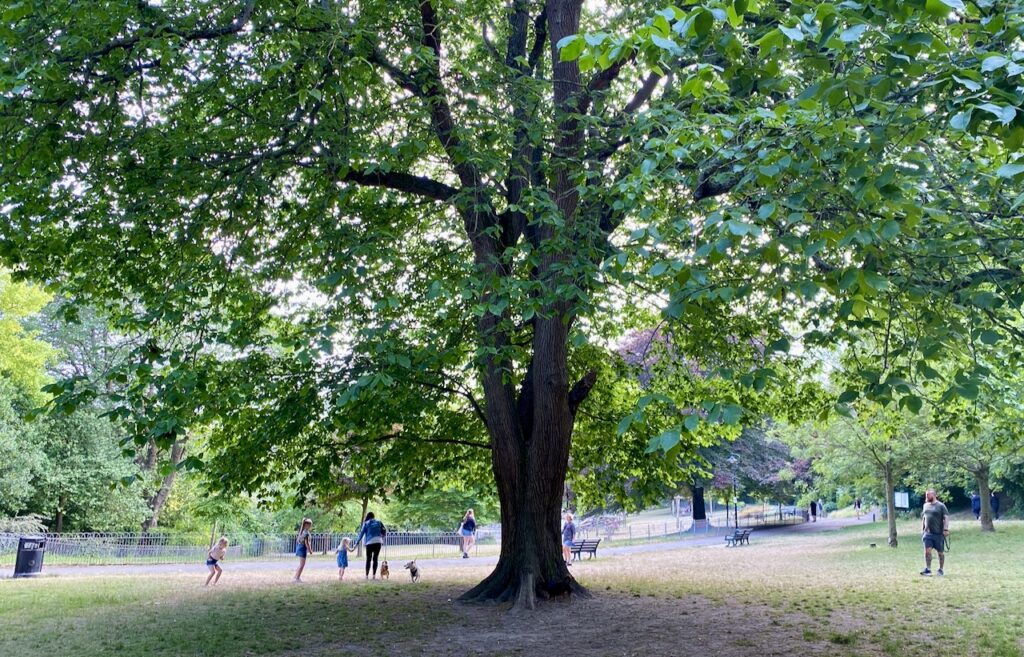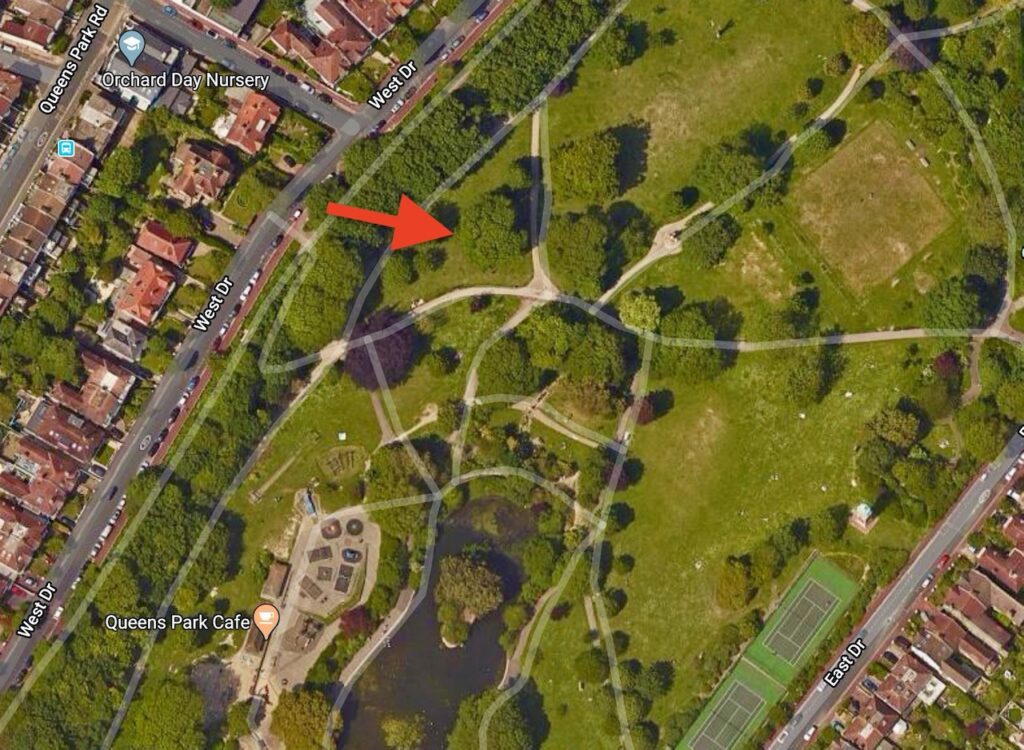Sussex Champion Elm
Queens Park, Brighton, which is home to a large and significant collection of elm trees, is proud to reveal news about one of its oldest trees.

The large Wych Elm (ulmus glabra), in the dog area just above from the playground, has been identified as the County Champion for this species, with the widest girth in Sussex, measured at 389cm.
Thanks to Peter Bourne, a volunteer curator for the national elm collection, for bringing this to our attention. See more notes from Peter below.

389cm girth: Bigger Than Your Average Tree
The tree is thought to be approximately 200 years old over, surviving not just Dutch Elm disease and two World Wars, but also the Great Storm of 1987 which felled many trees in Queens Park.
“With so many grand old trees lost to Dutch Elm Disease”, says the Woodland Trust, “the sweeping and majestic Wych Elm is a much rarer sight these days”.
You can help preserve our elms by becoming a Dutch Elm Disease Spotter. Click here.
The Wych Elm is the only elm that is regarded as being truly native to the UK. It usually grows in hilly or rocky woodlands, or beside streams and ditches. It is hardier than the English elm, so is found much further north and west, and in parts of Scotland.

Find out more about elms and Queens Park here.
– Ulmus glabra is a native tree species and is not a common free standing park planting especially nowadays. There were bigger trees in Firle Park, near Lewes and one tree in Beddingham Churchyard. These initially stood as county champions. From 1980 there were no other big trees in girth of this species outside Dutch Elm Disease Control Areas. Since 2009 East Sussex County Council’s financial backing for DED Control began a rapid non-reversible decline in financial support which led to the current annulation of over 75% of its elm population.
– Like all champion trees, these records are listed as part of the Tree Register. Though there are bigger trees further north in northern England and Scotland this number is declining owing to Dutch Elm Disease killing them off. Such records can be found on the Tree Register through membership. The current British Isles champion is in Scotland.
– Like I already said the county has now boiled down to trees both here and in Eastbourne. Though there are some magnificent Wych elm in Eastbourne none are larger than the specimens at Queen’s Park it seems.
– The measurement for the Wych elm in question in Queen’s Park is recorded as: 23 meters in height and 389 cm in girth circumference.
– The largest girth ever recorded for Wych elm was recorded by a Botanist called Plot in Yorkshire which in an account he wrote that features in Elewes and Henry’s of “Trees of Great Britain and Ireland” Volume 7 mentioned the felling of the tree in the late 1600’s/ early 1700’s period.
– There is no current world champion for Wych elm although a good many have been found in northern Europe like Norway, Sweden, Finland, Estonia as well as Russia, Germany and Poland.
– There are some furnishings made from Wych elm. The species is very frequent as a mature tree in Edinburgh and the Highlands in Scotland and around the Swansdale area of Yorkshire. It is still found as a small mature tree in some woodlands in England. It does not produce suckers unlike other elms but is propagated freely from its very fertile seed; when ripe and green, whilst still hanging on the tree in bunches the seed (samara as they are called) are edible and can be added to salads after washing. The taste is similar to sweet peas. Its commonly served with salads in restaurants and cafes in Amsterdam, Holland along with other elm seed. When the seed falls it is commonly known as “elm snow” or “elm confetti” in Europe.